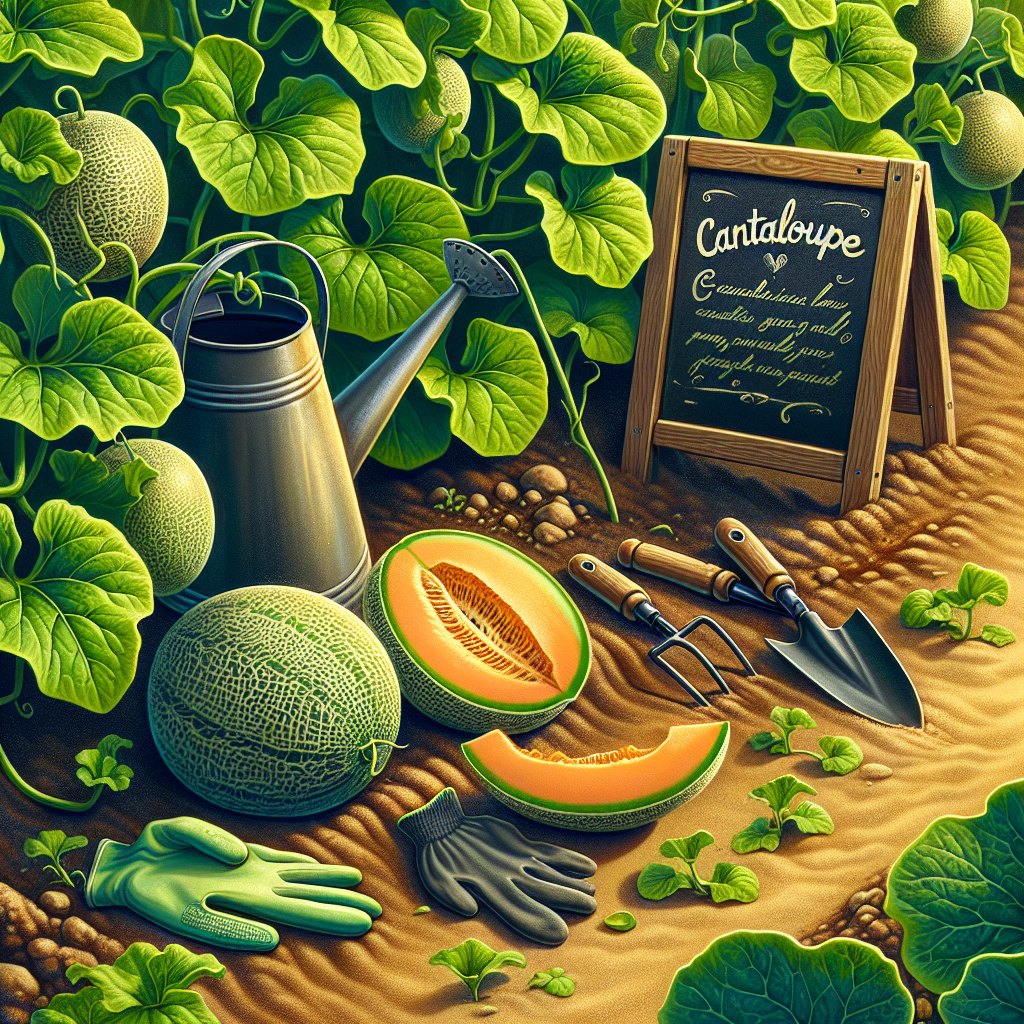The Best Ways to Deter Deer from Munching on Your Hostas
Updated July 18, 2024 at 2:17 am
Discover effective strategies and safe remedies to prevent deer from treating your garden as their personal salad bar, ensuring your hostas remain vibrant and intact throughout the seasons.

Understanding Deer Behavior and Preferences
As a gardener, you might be facing the challenge of deer turning your garden into their personal salad bar. Deer are attracted to hostas for their tender leaves and the shelter these plants provide. However, understanding deer behavior and their dining preferences is the first step in deterring them from your precious hostas.
Deer prefer to feed between dusk and dawn, taking advantage of the low visibility to avoid predators. They have a preference for smooth, tender plants with high moisture content, which unfortunately, makes your hostas an ideal target.
Creating a Physical Barrier
A robust fence is often the most effective way to keep deer away from hostas. A deer fence should ideally be 7 to 8 feet tall, as deer are capable jumpers. However, for those seeking a less imposing solution, a double-row fence can confuse and deter deer without needing to be as tall.
Alternatively, consider planting a perimeter of deer-resistant plants around your hostas. Some gardeners have found success using certain shrubs and herbs that deer find unpalatable due to their strong scents or textures, like lavender or rosemary.
Employing Deer Repellents
There are many deer repellents on the market that can help protect your hostas. Repellents usually work by either targeting the deer’s sense of smell or taste. It’s important to rotate different types of repellents to prevent deer from becoming accustomed to a specific deterrent.
One product that has garnered attention is the Liquid Fence Deer & Rabbit Repellent. Based on many reviews, users have found this spray effective because it is rain-resistant and has a long-lasting, unpleasant taste that discourages deer from taking a nibble.
Pros
- Easy to apply and can cover a large area
- Rain-resistant formula lasts for weeks
- Environmentally safe and biodegradable
Cons
- Somewhat strong scent upon application
- Needs reapplication after heavy rains
While some might find the scent during application to be overwhelming, it’s said that the odor diminishes for humans soon after, while remaining potent for deer. If you’re considering giving this repellent a try, remember that consistent application as directed is key for optimal results.
Find This and More on Amazon
Introducing Natural Predators
If you’re looking to take a more eco-friendly approach, creating an environment that attracts natural deer predators can help. While inviting a mountain lion into your backyard isn’t practical, domestic pets like dogs can act as deterrents. The scent of dog fur spread around the garden area can signal the presence of a predator to deer.
Nevertheless, for those who prefer not to have a pet, installing motion-activated sprinklers or lights can startle and scare away deer. The sudden movement and noise emulate the presence of a predator, encouraging deer to avoid the area.
Gardening Tactics to Protect Hostas
Altering your gardening practices can also make your hostas less appealing to deer. Try interplanting with strong-scented herbs or using textured mulches that are uncomfortable for deer hooves. As creating a pollinator-friendly garden can boost the health of your beds, diversifying your plantings may also confuse deer and make your hostas harder to target.
Pruning and removing any cover that could serve as a hiding place for deer near your hostas is another strategy. Deer are more likely to visit gardens where they can feed undetected. By opening up space and ensuring visibility, deer may feel less secure and look elsewhere for food.
The Power of Community Knowledge
Learning from the experiences of other gardeners can offer new insights into the art of deer deterrence. Local gardening groups and online forums are invaluable resources. For instance, it’s commonly shared among gardeners that swapping tips about what’s working for them can be beneficial in the collective fight against deer invasions.
It’s also interesting to note that gardening alongside others can sometimes result in a communal effort where louder or more frequent human activity deters deer naturally. There’s power in numbers, as they say, and in this case, it could help protect your hostas.
Natural Plant Fortifications
Building a stronger hosta through proper care might also make your plants less attractive to deer. A healthy hosta will recover quicker if it does get nibbled on, which makes good cultural practices like proper watering and fertilization essential. Learning how to care for snake plants or hostas can ensure they’re robust enough to withstand the occasional graze.
Additionally, applying foliar fertilizers with a strong smell can make your hostas less enticing to deer. It’s a dual-purpose solution that enhances plant health and acts as a mild repellent. Be sure to apply it as directed to avoid harming the plant.
Long-Term Landscape Changes
Making strategic changes to your landscape design might be a more permanent solution to deterring deer. As many deer prefer not to traverse areas without cover, consider creating clear, open spaces between wooded areas and your garden. Winter gardening techniques often employ similar strategies to protect vulnerable plants during the off-season.
Using elevated planters or terracing can also place your hostas out of easy reach. It may require more initial investment and labor, but it can pay off by protecting your plants in the long run without needing constant maintenance.
Adopting Deer-Resistant Companion Planting
Incorporating companion plants that deer dislike can be an effective and attractive way to safeguard your hostas. Plants like marigolds, garlic, and chives are known to repel deer with their strong smells. Positioning these deterrent plants around your hostas creates a natural barrier that deer are less likely to cross.
For multi-season protection, consider planting deer-resistant perennials. Flowers such as foxglove, coneflower, and yarrow not only add beauty to your garden but also sustain their deterring properties year after year, making your garden less of a target in the eyes of a deer.
Strategic Use of Textures and Sounds
Deer are sensitive to certain textures and sounds, so incorporating these elements into your garden can act as an additional line of defense. Try spreading gravel or eggshells around the hostas. The unusual texture underfoot is unpleasant for deer, and they’ll likely avoid the area.
Wind chimes and aluminum pie plates can also serve as auditory deterrents. The unexpected noises startle deer, making them skittish to remain or return. These methods are eco-friendly, non-toxic, and add a whimsical touch to your garden setting.
Focusing on Strong Smells
Animals rely heavily on their senses to navigate, and deer are particularly put off by certain smells. Planting herbs with potent aromas like mint, oregano, and thyme among your hostas can act as a natural repellent. These plants can also enhance the overall health of your garden and provide fresh herbs for your kitchen.
Homemade sprays made with cayenne pepper, garlic, or soap can also be effective deer deterrents. These typically need to be reapplied after rain or watering, but they’re inexpensive and allow for customization to what works best in your specific garden setting.
Understanding The Role of Timing
Timing can play a crucial role in preventing deer from eating your hostas. Since deer often feed at night, conducting your deterrent efforts in the evening can be more effective. Applying repellents or sprinkling deterrents just before dusk ensures that your measures are fresh and potent throughout the vulnerable nighttime hours.
It’s also vital to stay one step ahead of the deer throughout the growing season. Spring is when deer are particularly active, and your hostas are young and tender, so intensify your deterrent strategies during this time to protect new growth.
Continuous Monitoring and Adaptation
Consistent garden monitoring is key to staying ahead of any potential deer issues. Regular walks through your garden can help you spot signs of deer activity early on, allowing you to address the issue before it becomes a full-blown problem.
Being adaptable and willing to try new methods is also important. Deer can become accustomed to certain deterrents over time, so varying your strategies can prevent them from getting too comfortable in your garden. For example, alternating between different types of repellents or changing the location of auditory deterrents can maintain their effectiveness.
Innovative Commercial Products
The market is full of innovative products designed to keep deer at bay. While home remedies and physical barriers work well, sometimes a commercial product may provide the convenience and efficacy you’re looking for. Take, for instance, the Deer Off Weatherproof Deer Repellent stations by Havahart. These discreet stations can be placed around your hostas, releasing a scent that deters deer without affecting your plant’s growth.
Pros
- Weatherproof and long-lasting
- Discreet and easy to install
- Safe for pets and the environment
Cons
- May require several units for larger gardens
- Periodic replacement to maintain effectiveness
They’ve been reviewed as quite manageable for the typical gardener to use. The scent is said to be imperceptible to humans after initial installation, but remains effective in keeping deer at a distance. Just remember to place them strategically and according to the package directions for the best results.
Find This and More on Amazon
The Role of Seasonal Adjustments
Deer behavior and feeding patterns change with the seasons, and so should your garden protection strategies. In spring and early summer, when hostas are emerging and most appetizing to deer, increase your vigilance. Consider physical barriers or more frequent applications of deterrents during this time.
In the fall and winter, while deer may be less interested in your hostas, this doesn’t mean you should let your guard down completely. Maintaining a basic level of deterrence will help ensure that your garden isn’t seen as an easy target when food is scarce for deer.
Community Efforts and Education
Cooperating with your neighbors can be hugely beneficial in deterring deer. If the whole neighborhood takes measures to make their gardens less appealing, deer are more likely to move on to other areas. Sharing successful deterrent strategies and products with your community can create a more unified and effective defense.
Educating yourself and others on deer behaviors and successful deterrence practices ensures that your local gardening community is well-equipped to handle deer intrusions. You might consider working with local wildlife experts to organize workshops or disseminate information on living harmoniously with local wildlife while protecting your gardens.
Investing in the Right Tools
Finally, investing in the right tools and products is paramount for long-term success in protecting your hostas from deer. Tools such as garden netting, tall stakes, and sturdy fencing materials can be essential assets. Making sure these are of high quality will save you time and money in the long run.
Research and select products with proven effectiveness and durability. Look for items that other gardeners have had success with, such as top-rated repellents and fencing options, to ensure a reliable return on your investment.
Eco-Friendly and Sustainable Practices
When considering the best ways to protect your hostas from deer, it’s also crucial to focus on eco-friendly and sustainable practices. This not only benefits the environment but also the health of your plants and local wildlife. By using biodegradable materials, organic repellents, and cultivating a biodiversity that naturally deters deer, you’re making a positive impact on the ecosystem.
Remember that integrating a variety of strategies and being patient as you find what works best for your garden and local deer population is key. Your efforts will go a long way in ensuring that your hostas remain untouched and vibrant for you to enjoy throughout the growing season.
Adapting Gardening Schedules to Deer Habits
Timing your gardening activities can also be an advantage in the fight against deer. If you modify your schedule to avoid peak deer activity times, you might reduce the chances of encounters. Since deer are crepuscular, you might want to avoid early morning and evening gardening when deer are most active.
Furthermore, staggering the blooming times of plants around your hostas can be beneficial. If there’s always something less appealing to deer blooming, they may ignore your hostas. This method can be a subtle yet effective way to deter deer while keeping your garden visually stimulating throughout different seasons.
Incorporating Technology for Deer Deterrence
Modern technology offers a plethora of options for keeping deer at bay, whether it’s through motion-activated devices or electronic repellents that emit high-frequency sounds. These high-tech gadgets can provide a hands-off approach to deer deterrence, allowing you to focus on other aspects of garden care.
One particularly interesting product is the Orbit Yard Enforcer Motion-Activated Sprinkler. This sprinkler not only waters your plants but also deters deer with its sudden motion and noise. The unexpected spray can startle and shoo away intrusive deer effectively.
Pros
- Combines irrigation with deer deterrence
- Conserves water with its motion-activated feature
- Adjustable settings for range and duration
Cons
- Requires routine checks to ensure proper functionality
- May accidentally activate with other wildlife or pets
This product has been praised for its versatility, as it can be an integral part of your gardening routine while doubling as a deterrent, making it a multipurpose investment. As with any technology, thorough understanding of the instructions ensures the best use of the product.
Find This and More on Amazon
Utilizing Deer Deterrence as a Gardening Opportunity
Deer deterrence methods can coincide with overall garden enrichment. When you plant deer-resistant varieties, such as Russian sage or boxwood, you’re not just deterring deer, you’re also creating a more resilient garden that can recover more rapidly from any form of wildlife interaction.
Moreover, the activity itself of implementing deer deterrents—be it spreading natural repellents or checking fences—can boost your garden’s upkeep and lead to discoveries of other unrelated issues, such as pests or diseases, allowing for early intervention.
Harmonizing with Local Wildlife
It’s important to be mindful that deer are part of the local ecosystem. Deterrents should be chosen with a consideration for the well-being of the deer, other wildlife, and the environment. Ethical and humane solutions are not only better for wildlife, but they also resonate better with the community and local authorities, ensuring that your garden practices are socially responsible.
This might include installing wildlife-friendly nets that prevent deer from eating hostas without harming them or using organic liquid deterrents that won’t contaminate nearby water sources. Your efforts can contribute to a balanced coexistence with local fauna.
Monitoring Changes and Fine-Tuning Strategies
The key to a successful deer deterrence strategy is adaptability. As circumstances change, whether it’s a shift in local deer population or the introduction of new plants in your garden, being attentive and willing to adjust your methods will help you stay ahead of deer.
It’s also crucial to keep an eye on how deer respond to your actions—something that works one season may not be as effective the next. This ongoing process of trial and observation can ultimately lead to a set of personalized and evolved strategies that work best for your unique garden environment.
Leveraging Local Landscape Characteristics
Every yard and garden has its own set of characteristics that can be used to your advantage. If you have natural slopes, use them to place your hostas in a less accessible spot for deer. Understanding and utilizing the innate features of your landscape can be a creative and cost-effective method to naturally deter deer.
Additionally, making use of local materials such as rocks, branches, or native plants for barriers or deterrents not only integrates seamlessly with your garden’s aesthetics but also promotes a sustainable and eco-conscious approach to deer management.
Final Thoughts on Protecting Your Hostas
Protecting your hostas from deer can be a multifaceted and enlightening journey within your gardening adventures. By learning and applying the various tactics detailed above, you not only secure the well-being of your hostas but also further your knowledge as a gardener.
While it might seem daunting at first, remember that gardening is an ongoing process of learning and enjoying the fruits—and in this case, the foliage—of your labor. Your hostas can thrive with the right combination of perseverance, strategic planning, and the willingness to adapt and experiment with different approaches to deer deterrence.
Shop more on Amazon
Flowers & Plants Team
Flowers & Plants Team



